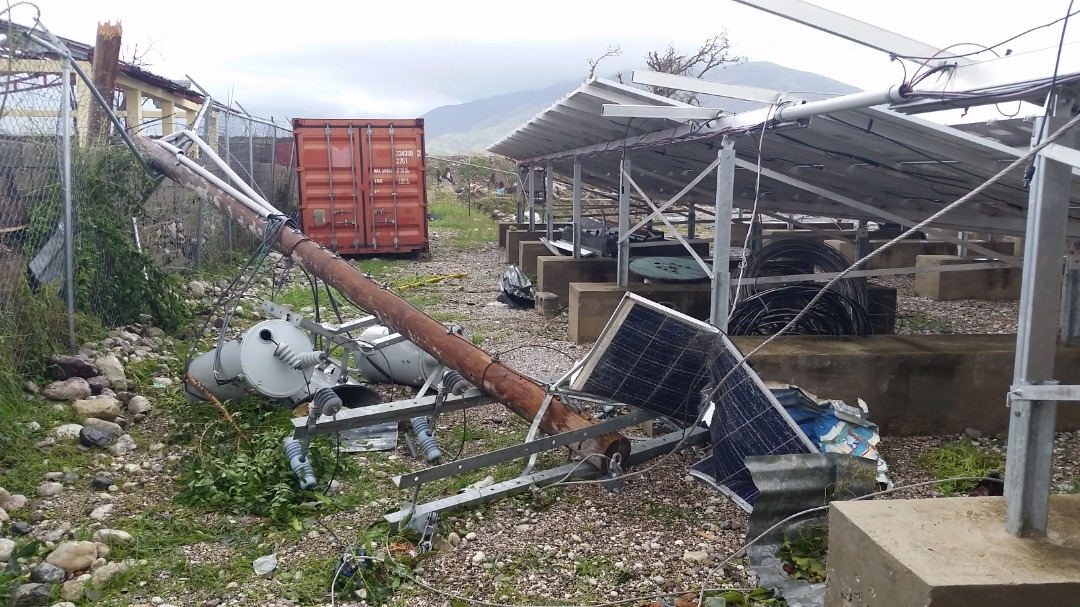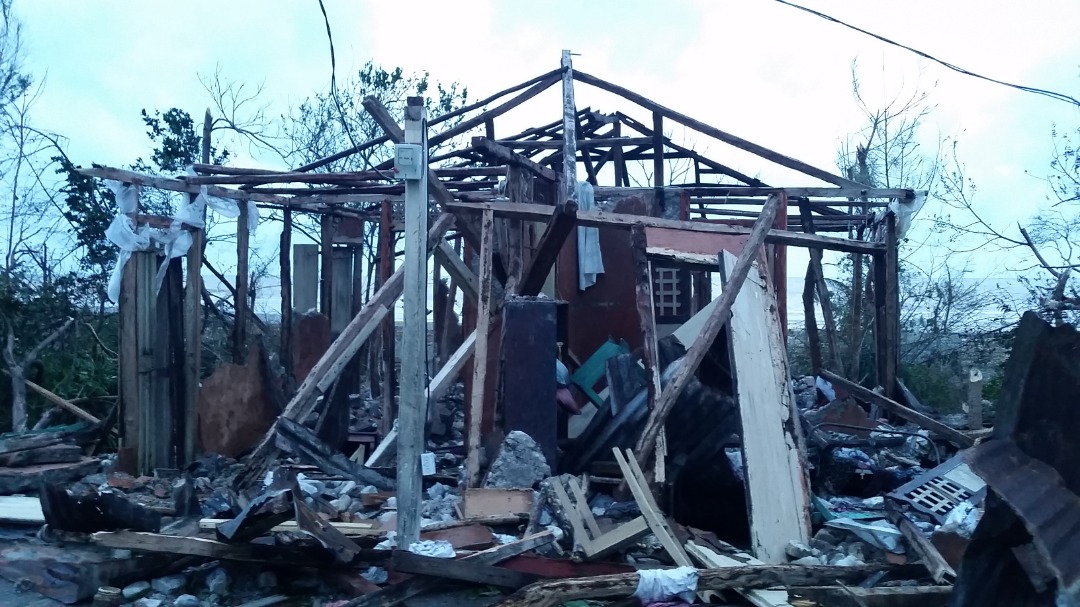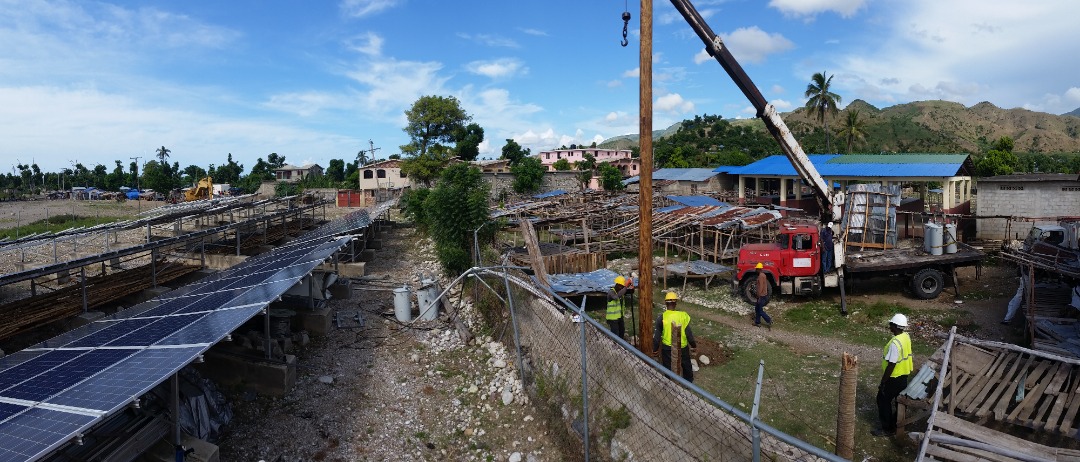When Hurricane Matthew made landfall on the coast of Haiti in October of 2016, the eye of the storm passed directly over the town of Les Anglais, explains Adam Eberwein, Director of Microgrid Operations for EarthSpark International. The destruction to the community and local infrastructure was unfathomable. The EarthSpark team had spent three years prior designing and developing a microgrid to provide the town’s residents with power. In fact, the Les Anglais microgrid had only been in operation for a year and a half before the hurricane’s torrential rains and gale-force winds wiped out 40% of its solar panels and rendered the distribution system inoperable.

Eberwein explains that reconstruction was challenging, but that the team was eventually able to bring the project back online. And the rebuilding process revealed valuable insights. One key lesson, Eberwein indicates, involved the siting of solar panels. “… a large percentage of our damaged solar panels were located on market roofs, previously made available for use by the local municipality,” he says. “The greater exposure and lack of local standards for market structure construction led to failure points that were likely avoidable if built at ground level and under different design considerations.” He emphasizes the importance of sourcing accurate wind maps of project development areas, and of closely evaluating weather patterns and underlying structures to support the strategic placement of solar panels. For him, the hurricane’s destructive force also reinforced the importance of resilient systems.

“For distribution,” Eberwein asserts, “the extent of damage led to further justification of the value for standalone microgrids. Low- and medium-voltage lines required repair, but the scale of damage was lessened by generation placement adjacent to customer load.” These are just two of the many invaluable lessons that the EarthSpark International team gleaned from this experience—all of which, they feel are applicable to other remote microgrid applications, wind-prone regions, and beyond.

In October, Eberwein will share a first-hand account of this process, enriched by technical details, images, and anecdotes at the HOMER International Microgrid Conference. Join him and more than thirty top presenters from across the industry to participate in microgrid development and policy discussions and learn new applications and technical skills from global case studies.
We’re pleased to welcome Adam Eberwein as a speaker at the HOMER International Microgrid Conference October 7-9 at the Hyatt Regency in Cambridge, MA.
Case Studies: Microgrids for Resilience
Nathan Adams, ABB, Industrial Microgrids for Resilience
Adam Eberwien, EarthSpark International, Haiti Off-Grid Case Study: Resiliency Considerations in Energy Access Microgrids
Kate Muller, Cadmus, Microgrid Assessments for Resiliency in Massachusetts
Join us at the Virtual 8th Annual HOMER International Microgrid Conference, October 12-16, 2020.
Please share news of the HOMER International Microgrid Conference on social media: #HIMC2019
